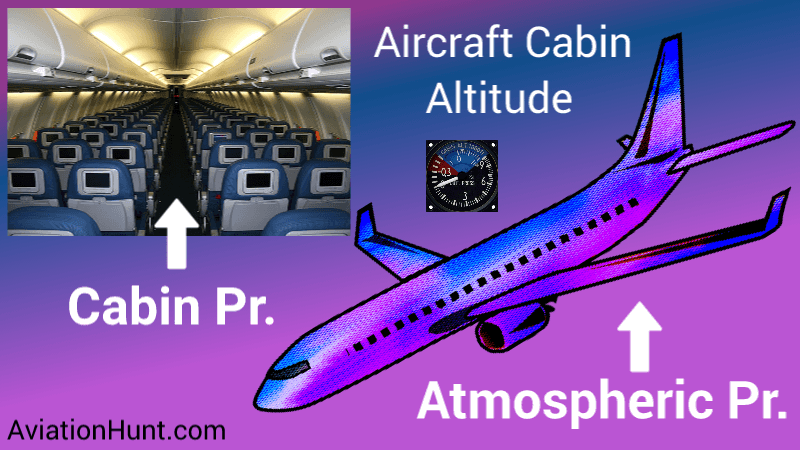40+ Pressure Inside Airplane Cabin
The cabin pressurization and ventilation is controlled by opening and closing of outflow valves. Maximum cabin pressure differential difference between inside and outside presssures can be 835 PSI.

How Does Cabin Pressurization Work On An Airplane Aviationhunt
Exterior and interior altitude profile on a typical flight.

Pressure inside airplane cabin. It will relieve that pressure. At ground level the air pressure is a little over 14 pounds per square inch PSI. This means that as the airplane climbs to its cruising altitude of 30000 ft the inside of the cabin will be regulated to stay at around 6000 8000 ft.
Give your answer to two significant figures. Ethan Williams filmed what happened when a flight from Hong Kong to Los Angeles had to make an emergency landing in Alaska. A normal inspiratory breath of say 500ml in an adult requires a distending pressure of under 3cm H2O Calculated.
When an airplane reaches its typical cruising altitude usually about 30000 to 40000 feet the air pressure may be. Figure 17 shows how atmospheric pressure varies with altitude. The aircraft is pressurized by bleed air from the engines which is distributed by the air conditioning system.
The packs condition the air for temperature and humidity typically taking all of the water out of the air and then pump this air into the cabin at high pressure such that it is at the proper temperature after expansion to cabin altitude. Airplane cabins have very low humidity levels Dr. When flying the pressure inside the cabin of an aircraft is kept at 70 kPa.
114 rows Retrieved 13 December 2011. On a typical flight as the aircraft climbs to 36000 feet the interior of the plane climbs to between 6000-8000 feet. The airplane may be climbing at thousands of feet per minute but inside the cabin the rate of climb is approximately what you might experience driving up a hill.
3 cm H2O 980 Pacm H2O 294 Pa 3e2 Pa Mars Fact Sheet. The aircraft window has an area of 810cm2 810 c m 2. Aircraft cabins are pressurised using cooled and filtered air bled from the engines keeping the air pressure inside the cabin at the equivalent of an altitude of 8000 feet.
The pressure inside the cabin of the aircraft flying at an altitude is. Theres also the negative pressure valve which protects the aircraft from the effects of a shift in which the outside pressure would become greater than inside the cabin. Why Cabin Pressurization Is Important.
Cabin pressurization is important because of the nuances between low- and high-altitude air density. A typical commercial flight will travel at 30000 feet. The aircraft window has an area of 810 cm2.
Air is less dense at high altitudes than low altitudes. Use data from Figure 17 to calculate the resultant force acting on an aircraft window when the aircraft is flying at an altitude of 12km 12 k m. The pressure inside is regulated by a series of compressors.
Pressurization systems are designed to keep the interior cabin pressure between 12 and 11 psi at cruise altitude. On a typical flight as the aircraft climbs to 36000 feet the interior of the plane climbs to between 6000-8000 feet. It might take an average airliner about 20 minutes to reach a cruise altitude of say 35000 feet at which point the pressurization system might maintain the cabin at the pressure youd experience at 7000 feet.
Air exits the cabin through outflow valves which are typically at the rear of the pressure vessel. On a typical flight the inside of an airplanes cabin is regulated to a pressure of about 11- 12 psi. The positive pressure release valve will pop open if inside pressure gets too high because too much air is being pumped in the cabin.
Use data from Figure 1 to calculate the resultant force acting on an aircraft window when the aircraft is flying at an altitude of 12 km. Pressurization systems are designed to keep the interior cabin pressure between 12 and 11 psi at cruise altitude. Airplane Pressure Safety.
Goldman explains because about 50 percent of the air circulating in the cabin is pulled from the outside and at high altitudes the air is. Cabin air management systems are even more sophisticated on modern aircraft like the 787 Dreamliner where the pressure is lowered to equal 6000 feet. About 11 pounds per square.
Airplanes are designed to pump air into the cabin to mimic the 147 pounds per square PSI of pressure thats found at sea level. Although Boeings Dreamliner technology has lowered that to 6000 feet making the cabin atmosphere more pleasant even though commercial aircraft often fly at 40000 feet. Physics Questions Answers for Bank Exams.
Aircraft pressurization systems normally allow the pressure inside the cabin to drop as the plane climbs - until it reaches around 8000 feet above which point air i. BWhen flying the pressure inside the cabin of an aircraft is kept at 70 kPa.

Modern Jet Aircraft Cabin Pressurization Basics Pilot Visnu

Aircraft Pressurization Beginner S Guide Aerosavvy


Post a Comment
Post a Comment